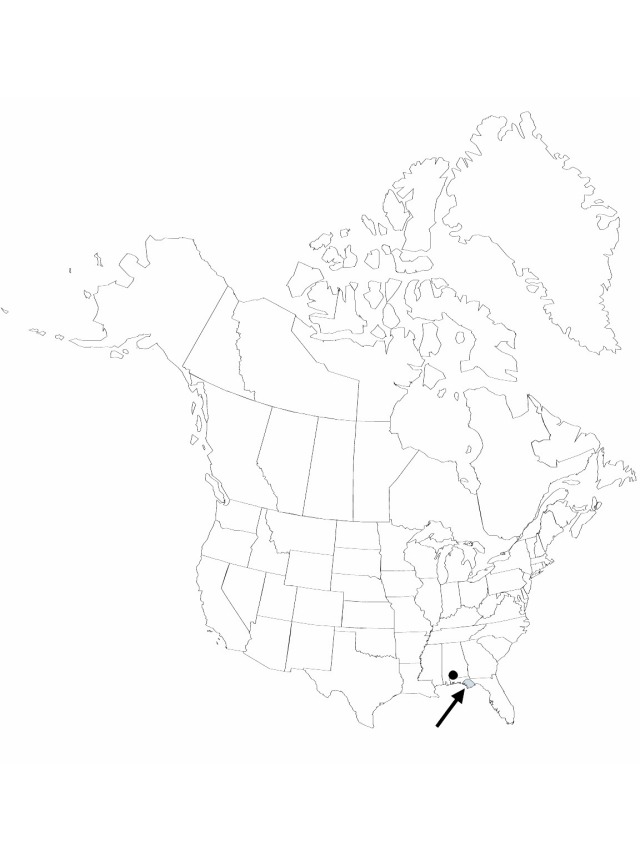Xyris isoetifolia
Sida 2: 227, plate [p. 252], fig 2. 1966.
Herbs, perennial, densely cespitose, (15–)20–30(–40) cm, base not abruptly bulbous. Stems compact. Leaves erect or ascending, 4–15 cm; sheaths glossy brown or red-brown, chaffy; blade green, filiform or narrowly linear, twisted, to 1 mm wide, smooth. Inflorescences: scape sheaths exceeded by leaves; scapes linear, nearly terete, 0.5(–0.7) mm wide, smooth, not ribbed; spikes ellipsoid to obovoid, 5–7(–10) mm; fertile bracts ca. 4.5 mm, margins nearly entire, apex rounded. Flowers: lateral sepals included, reddish brown, linear-curvate, 4 mm, keel firm, ciliate; petals unfolding in morning, blade obovate, 4 mm; staminodes bearded. Seeds translucent, ellipsoid, 0.5 mm, distinctly longitudinally ribbed, with fainter transverse lines. 2n = 18.
Phenology: Flowering summer–fall.
Habitat: Sphagnous bogs, low pine savanna, shores of dolines, coastal plain
Elevation: 0–100 m
Discussion
Xyris isoetifolia, locally abundant only in northwest Florida, is most often mistaken for X. baldwiniana but is distinguishable by its bearded staminodes and more distinctly ribbed, shorter seeds.
Selected References
None.

